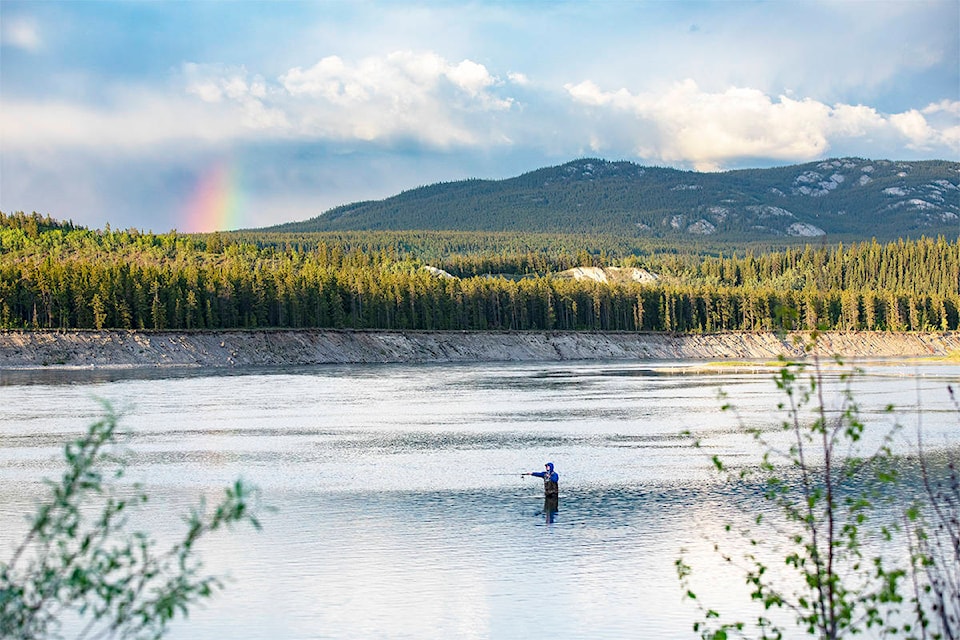All fishing of Yukon River fall chum has been closed following what’s now been confirmed as the lowest run on record.
Effective Sept. 11 and until Nov. 30, all angling of the salmon on the Yukon River, Porcupine River and its tributaries is forbidden, Fisheries and Oceans Canada announced in a notice Sept. 10.
The Yukon Salmon Sub-Committee has also issued a statement urging Yukon First Nations to take additional conservation measures if they haven’t already.
About 189,000 fall chum, as confirmed by genetic testing, had entered the Yukon River as of Sept. 7 — a far cry from the pre-season forecast of 827,000 to 1,045,000 fish.
At least 300,000 fish must enter the river before either Alaska or Yukon fishers can begin harvesting.
The total run is believed to have entered the river at this point, meaning there’s no hope of a late rush of incoming fish.
“There isn’t a harvest share,” Jesse Trerice, Yukon River fishery manager for Fisheries and Oceans Canada said in an interview Sept. 10.
“There isn’t a fishery allocation for either the U.S. or Canada right now.”
Just more than 3,200 fall chum had crossed into Canadian waters as of Sept. 9, compared to the roughly 12,600 fish that had been counted this time last year.
Recent forecasts have estimated that a total of 47,250 fall chum will cross into the Yukon, making it impossible to meet the goal, as laid out in an international salmon treaty between the U.S. and Canada, of getting 70,000 to 140,000 fish to their spawning grounds.
Both Trerice and Yukon Salmon Sub-Committee chair Al von Finster told the News that it’s too early to say what could have caused this season’s poor showing. However, both said that the equally weak summer chum run, as well as low numbers of chum across western Alaska in general, suggest that the problem, or problems, lie in the ocean, not the river.
“What those problems are, I don’t know — there’s lots of speculation but there’s no smoking gun,” von Finster said. “I think there’s probably going to be, you know, a whole regiment of smoking guns because probably, all sorts of things, incrementally, are affecting it.”
Speaking generally, Trerice said there are “quite a few variables” in the ocean that could impact any given salmon run, from changing water temperatures to food availability to competition with other species to human harvest.
“A lot of questions are being asked right now and unfortunately we just don’t have the answers,” she said.
What’s unusual, she added, is that while this year’s Chinook salmon run also failed to meet spawning goals, the total number of fish that entered the river still fell within the range forecasted in the preseason. The fall chum, however, basically failed to show up at all.
Fall chum are less glamorous than their Chinook counterparts, a smaller fish also known as “dog salmon” because they’ve traditionally been used to feed dog teams. Trappers also use them as bait, although they are fit for human consumption.
There’s a small commercial fishing market for them in Dawson City that helps facilitate those uses in the Yukon, which, like all other fall chum fisheries, is now closed.
“It’s a seasonal livelihood for some people and to close that fishery, especially when there hasn’t been a Chinook commercial fishery in many years, it (is) far-reaching, there’s a ripple effect with this,” Trerice said.
“It’s hard not just on the commercial fishers themselves, but those who really do depend on acquiring chum from them. So yeah, it’s a bit of a shock and a disappointment, I would say, and very frustrating for commercial fishers this year.”
The Yukon Salmon Sub-Committee hasn’t issued a request to Yukon First Nations yet to cease their fall chum harvests, the same way it did for Chinook salmon; von Finster said the organization is waiting a week to see if anything changes.
While fall chum populations have crashed and recovered before, he said there hasn’t been enough research done to know if the population rises and falls in structured cycles.
“This year, maybe it’s indicative of a new future, but it may also be … something that’s going to be followed by very high numbers coming back,” he said.
“That’s part of the miracle of the salmon — although you can take them down to low escapements, if conditions get better, they can go back up again.”
It was encouraging, he added, to see both Alaska and the Yukon take measures to cut back on harvest opportunities in order to keep as many fish in the river as possible.
“It just means more eggs in the gravel,” he said.
Contact Jackie Hong at jackie.hong@yukon-news.com
